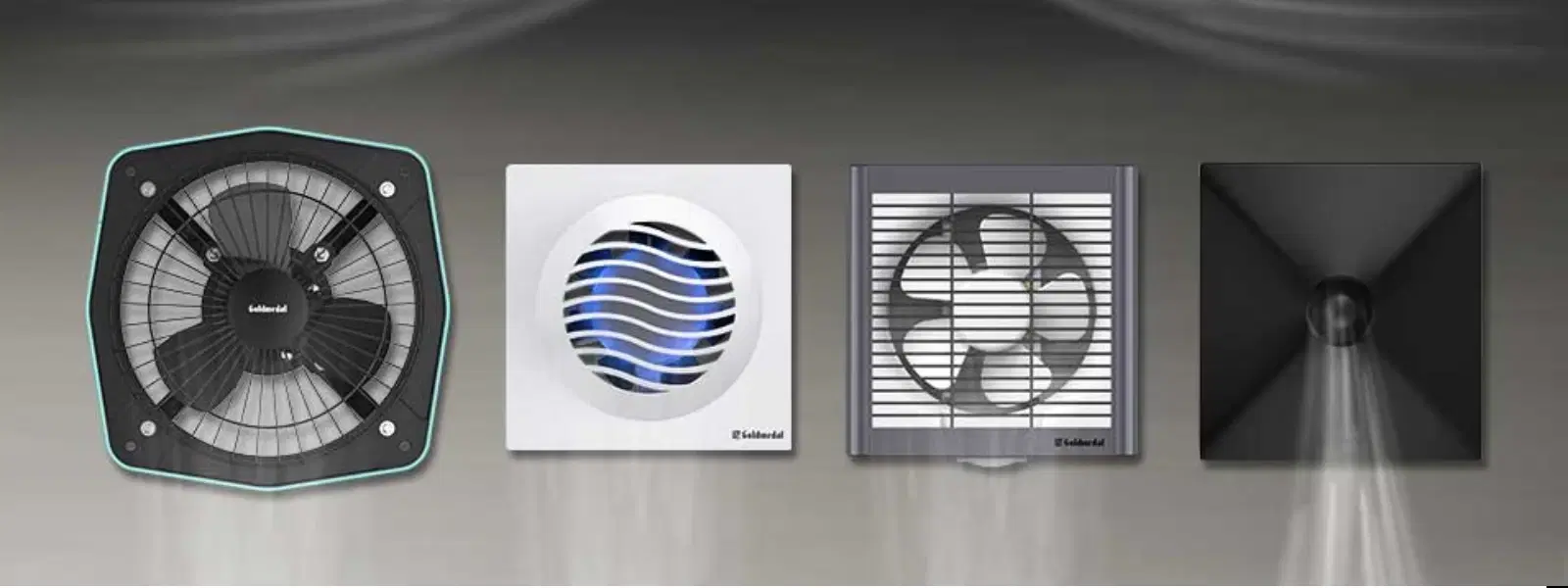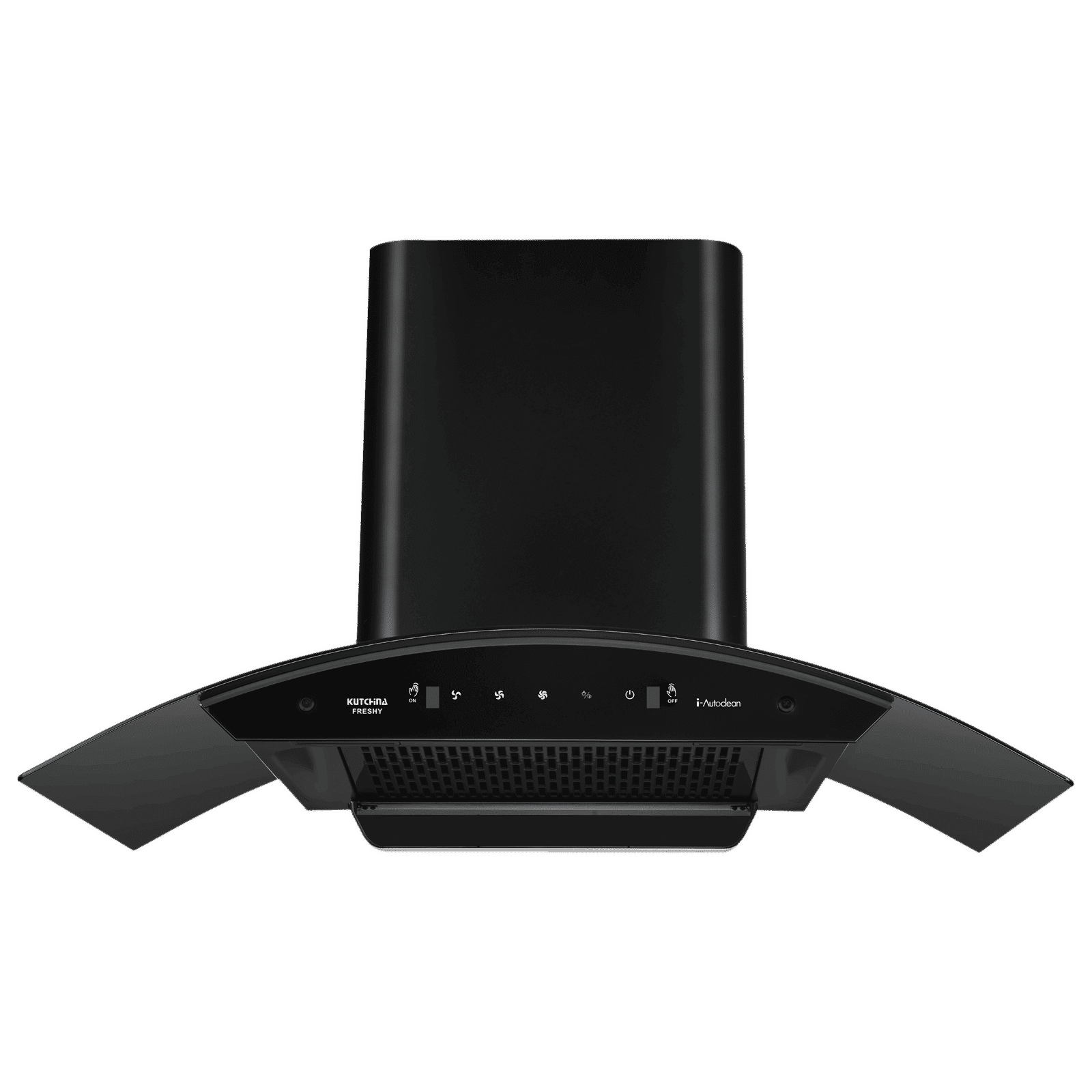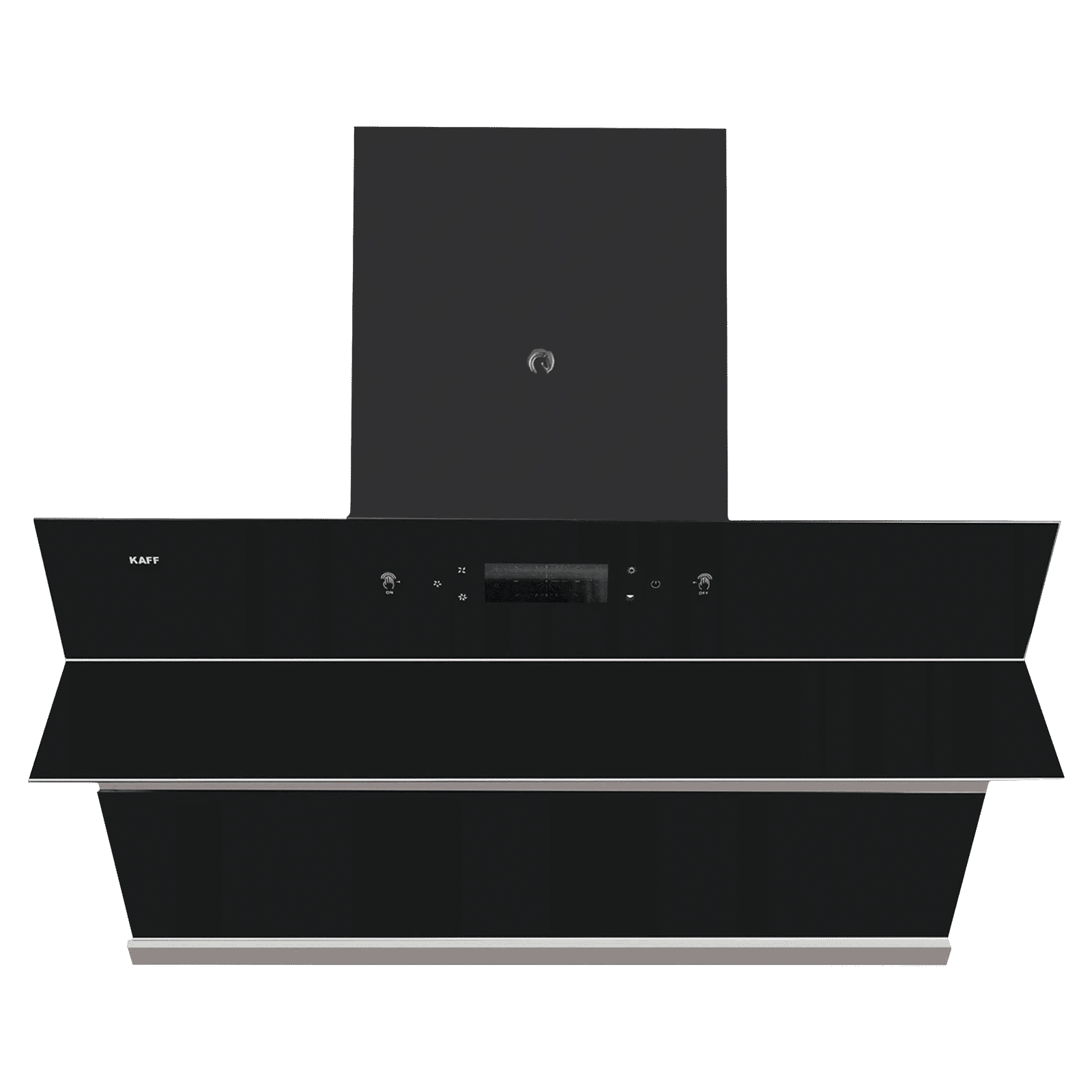
Home Appliances
•04 min read

Buy Kutchina FRESHY 90cm 1350m3/hr Ducted Wall Mounted Chimney with Filterless Technology (Black) online at best prices from Croma. Check product details, reviews & more. Shop now!
Ever walked into a room and felt the air was stale or humid? The right exhaust fan size can transform your home's comfort by providing optimal ventilation and maintaining a healthy atmosphere. This article delves into how the correct exhaust fan dimensions can significantly impact airflow, efficiency, and the overall ambience in every room of your home. Read on to discover tailored sizing tips for rooms like your bathroom, kitchen, and even utility spaces.
Exhaust fans are vital for maintaining indoor air quality by extracting stale, humid, or polluted air from your home. The efficiency of these fans is directly tied to their airflow capacity (CFM), which is influenced by the exhaust fan dimensions. Choosing the best size for exhaust fan installations means ensuring your spaces are well-ventilated, thereby reducing moisture and potential mould buildup.
Using an improperly sized fan can lead to issues such as insufficient ventilation, increased energy consumption, and disruptive noise levels. Whether it's a bathroom or a kitchen, the wrong exhaust fan blade size and overall dimensions can lead to a compromised airflow capacity, making your space less comfortable and potentially causing long-term health implications.
Exhaust fan dimensions refer to key measurements like the blade size, housing size, and duct size. Each of these factors plays an essential role in determining the overall airflow capacity of the fan. When these dimensions are well-matched with your room size, you achieve an environment that is both energy-efficient and pleasant to live in.
Common exhaust fan sizes include 4-inch, 6-inch, and 8-inch models. For instance, smaller dimensions like the 4-inch fan are often used in compact spaces such as bathrooms or closets, whereas larger fans with a higher CFM are ideal for kitchens and larger living areas. Understanding these standard exhaust fan sizes helps in making an informed decision, especially when planning a replacement or a new installation.

Buy Crompton Ducting Kit For Chimney (9 Feet Aluminum Alloy Duct Pipe, D6BIB900001I, Silver) online at best prices from Croma. Check product details, reviews & more. Shop now!
When it comes to bathrooms, the exhaust fan size needs to be chosen based on the room's square footage and the required airflow capacity (CFM). For small bathrooms, a modest fan that produces between 50-100 CFM is often sufficient, while medium to larger bathrooms may require fans with a capacity of 110-150 CFM. It’s also crucial to consider noise levels measured in sones; a quieter option with a rating around 2.0 sones is typically ideal for such personal spaces.
The kitchen has unique ventilation needs, notably for the removal of grease and smoke. While selecting the best size for exhaust fan installations in your kitchen, ensure that the chosen unit has an adequate blade size and CFM to handle larger cooking areas. Most kitchens perform well with models offering between 150-300 CFM, ensuring that cooking fumes are efficiently vented out.
Utility rooms such as laundry spaces or closets require compact solutions. Small exhaust fan options are available that provide excellent moisture control without taking up too much space. These units are designed specifically to handle the relatively lower airflow demands of smaller areas, protecting your stored belongings and ensuring a fresh environment.
In larger spaces like living rooms, garages, or workshops, you may want to opt for heavy-duty exhaust fans. These industrial fan sizes are engineered to handle expansive areas and higher ventilation demands. When considering such models, ensure that the exhaust fan airflow capacity aligns with the room’s volume and function, providing efficient air renewal without excessive noise.
Several factors influence the right exhaust fan size for your home. Begin by measuring the room's square footage to understand the volume of air needing circulation. Ceiling height is another critical consideration; higher ceilings often require a higher air change per hour (ACPH) rate. Additionally, confirming that the duct size is compatible with the chosen fan ensures optimal performance and energy efficiency. By carefully assessing these aspects, you can determine the best size for exhaust fan installations in any room.

Buy KAFF ALBURY DHC 90cm 1420m3/hr Ducted Auto Clean Wall Mounted Chimney with Touch Control Panel (Black) online at best prices from Croma. Check product details, reviews & more. Shop now!
Using online exhaust fan size calculators or charts simplifies the selection process by matching your room's dimensions with the required CFM. For example, if your room measures around 100 square feet, the calculator might recommend a fan with a minimum of 100 CFM. These tools are designed to take the guesswork out of choosing the right exhaust fan dimensions, leading to better home ventilation.
Pro Tip from Tata Neu: Did you know? For optimal ventilation, your exhaust fan should provide at least 1 CFM per square foot of room space. For bathrooms larger than 100 square feet, add 50 CFM for each fixture like a shower or bathtub.
Measure the square footage of the room and refer to a CFM chart to determine the appropriate fan size based on airflow requirements.
Lower sones around 2.0 indicate quieter operation, making them suitable for bathrooms and bedrooms, whereas a 4.0 sone rating is common in larger or more industrial fans.
Yes, 14-2 wiring is typically adequate for most residential exhaust fan installations; however, always double-check the manufacturer’s electrical specifications.
A 50 CFM fan is best suited for small rooms up to 50 square feet, such as tiny bathrooms or utility closets.
Selecting the right exhaust fan size is crucial to ensuring your home enjoys the benefits of proper ventilation, efficient energy use, and a comfortable living environment. Whether you are upgrading your bathroom fan sizing, planning for kitchen ventilation, or considering a heavy-duty model for larger spaces, understanding exhaust fan dimensions helps tailor solutions to your needs. By considering factors like room size, ceiling height, and duct compatibility, you can choose a fan that not only meets but exceeds your expectations. Embrace a smarter way to maintain indoor air quality with practical sizing guidelines and reap rewards like NeuCoins when shopping with Tata Neu for your home improvement essentials.